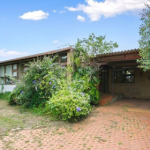Can seed planting drones help fight climate change and deforestation?

We’ve heard the ‘one billion trees’ mantra before and it didn’t fail for the want of drones, but that’s a sting for Hawke and Keating to remove. Now the ABC reports that “this team of engineers hopes to use drones to plant a billion trees every year to fight an unfolding global catastrophe.”
We are expected to believe that forests can be re-established on cleared and degraded land simply by scattering seeds on nutrient-depleted, desiccated soils with little remaining organic matter, exposed to scorching sun and erosion by wind and water. With productive land being more intensively used for food production, it’s unlikely that much of it will be turned over for growing trees. Technology can play an important role, but identification of sites well suited to growing trees cannot redress the complex chain of social, economic and disrupted ecological forces that causes deforestation.
Anyone who has tried to establish even a small tree plantation knows that weeds, insects, disease, flooding, drought, fire and a host of other vagaries are more than a match for good intentions. Wild grazing animals are ‘farmers’ having a particular dislike for tree seedlings. They will destroy large numbers of young trees very quickly to maintain conditions favourable to grasses. It takes hundreds of years for a forest to reach a state of climax after many generations of plant succession in response to almost infinitely variable conditions. Forest ecosystem evolution is constant but unpredictable with intricate overlapping systems involving light, the atmosphere, the water and nutrient cycles with organic and inorganic feedback loops of confounding complexity.
Experiments with direct seeding have been carried out with success largely depending on preparation and subsequent management. Realistic trials would need to demonstrate high success rates to justify the enormous seed production/collection, distribution and management effort that would be required to reach the scale envisaged.
Drones are tolerated in a beehive because they may be needed for procreation but they aren’t allowed to do stunts. This story may have planted a seed in the minds of those who want to religiously believe in things too good to be true. Forests are important and biodiverse carbon sinks. Incentives are urgently needed for the protection and regrowth of forests but it is misleading to claim that planting trees will avert a poorly-defined ‘unfolding global catastrophe’. The oceans are vast carbon sinks where phytoplankton contribute most of the oxygen in Earth’s atmosphere.
Cloud seeding can’t satisfy unlimited water demand; printing millions of dollars per second won’t prevent poverty; nuclear fusion might create atmospheric heat islands and hasten the depletion of resources. Technology is a useful servant but a deceptive and indifferent master. There are plenty of examples of the profit motive working for environmental improvement, but the bottom line is limiting. Facts are seeds that require careful nurturing but too often they fall on barren, if not stony, ground.

Max Thomas, Dip. Agric. (retired) worked in the public sector and in private consulting on a range of land, water and waste management projects. He prepared guidelines for irrigation with recycled water for EPA Victoria and developed a number of Environmental Management Systems in the water industry.














Alan Douglas
September 6, 2017 at 10:26 am
I agree that planting forests with the use of drones is impracticable. However, some years ago I did read that a row of trees about five trees wide planted at right angles to the prevailing wind would protect an area downwind of about 200 meters, thereby allowing marginal land to be brought into production. At that time, the land under consideration was the Nullarbor. No-one seems to have picked this up. Trees can be successfully planted with the use of tractors – a farmer in WA started doing this by growing saplings in cardboard one-liter milk containers filled with a moisture retention gel and nutrients. He had invented a slide and borer attachment allowing him to plant at walking speed. I did not see any follow-up story but the idea seemed logical – by the time the sapling had finished the nutrients it should be strong enough to survive.
Max Thomas
September 11, 2017 at 1:48 pm
Thanks Alan. Yes, the ‘shelter’ ratio is about 12 metres for every metre of tree height. The method you describe for protecting young trees has been widely used for some years, although I imagine it would be very challenging to establish trees on the Nullarbor. I had a lot of involvement with ‘tree belts’ in recycled water irrigation. The spacing depends on tree species and the land use in between. Tree species selection is very important in that situation. Nutrient uptake, salt tolerance and soil type being among the selection criteria. A good example of tree planting on a large scale for land restoration, salinity management and wildlife habitat restoration is the Regent Honeyeater project in northeast Victoria. http://regenthoneyeater.org.au/